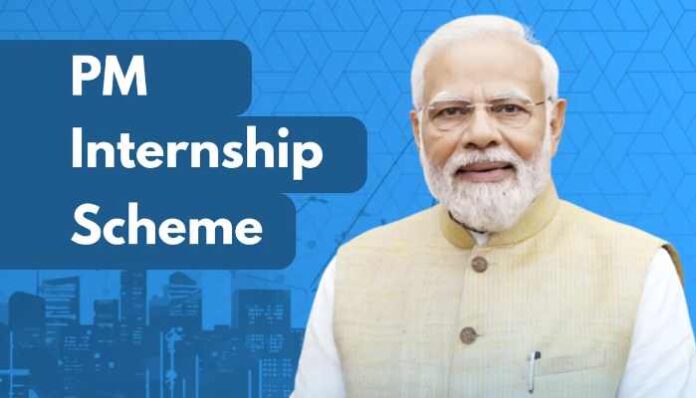In a surprising turn of events, several candidates who were accepted into the PM Internship Scheme backed out at the last minute during the first week of offer extensions in November. The initiative, designed to provide career opportunities to young individuals from economically weaker sections, has seen a mixed response despite its promising objectives.
The report highlights that some of the withdrawals stemmed from personal reasons, with candidates citing parental pressure or a lack of clarity about long-term benefits as contributing factors. Despite these challenges, the overall acceptance rate for the program has risen significantly, from one-third to nearly two-thirds of the offers.
Understanding The PM Internship Scheme
The PM Internship Scheme, launched by the government, aims to provide employment-linked training to unemployed youth aged 21 to 24 years. The program prioritizes individuals who meet the following criteria:
- Not Enrolled In Full-Time Education: Candidates should not be pursuing a full-time academic course.
- Family Income Limit: Annual family income should not exceed ₹8 lakh.
- Unemployed Status: Candidates should not have any ongoing full-time employment.
The scheme’s goal is to empower youth with practical exposure and bridge the gap between academic knowledge and industry demands. However, the recent dropouts have raised questions about the scheme’s implementation and its ability to address candidate concerns.

Why Candidates Are Backing Out?
According to reports, several candidates cited personal and external factors for their decision to withdraw from the program. Some of the key reasons include:
- Parental Influence: Many applicants revealed they applied for the scheme under pressure from parents, without fully understanding the program’s objectives.
- Uncertainty Over Career Prospects: Concerns about the long-term value of the internship and whether it would lead to stable employment played a significant role in their hesitation.
- Lack Of Preparedness: For some, the prospect of joining the workforce after a gap in education or employment created anxiety about meeting professional expectations.
The government is reportedly assessing these concerns to ensure better communication and support for future applicants.
A Gradual Increase In Acceptance Rates
Despite the initial setbacks, the acceptance rate for the PM Internship Scheme has shown significant improvement. Initially, only about one-third of the offers were accepted. However, with better awareness and support mechanisms, this figure has now climbed to two-thirds, indicating growing confidence among candidates in the program’s potential.
Experts believe this upward trend reflects the program’s ability to adapt and address the concerns raised by participants and their families.
Impact On Government-Led Internship Initiatives
The dropouts from the PM Internship Scheme have drawn attention to the broader challenges faced by government-led employment programs. While these initiatives aim to provide meaningful opportunities, they often grapple with issues such as:
- Candidate Awareness: A lack of understanding about program objectives and benefits.
- Societal Expectations: Cultural and parental pressures influencing career decisions.
- Program Adaptability: The need for flexibility to address individual concerns.
Analysts suggest that for such schemes to succeed, the government must focus on better outreach, clear communication, and support systems for participants.

What The Future Holds For The PM Internship Scheme?
The government has already taken steps to improve the program’s acceptance rate and address the reasons behind candidate withdrawals. Some of the proposed measures include:
- Awareness Campaigns: Educating candidates and their families about the scheme’s long-term benefits.
- Mentorship Programs: Providing guidance and support to help candidates transition into the workforce.
- Enhanced Communication: Offering clear information about internship roles, responsibilities, and career prospects.
These efforts are expected to create a more positive perception of the scheme and encourage greater participation in the coming months.
Challenges In Bridging The Education-Employment Gap
The PM Internship Scheme is part of a larger effort to tackle unemployment and equip youth with skills that match industry demands. However, the high dropout rates highlight the persistent challenges in bridging the gap between education and employment in India.
Some of these challenges include:
- Mismatched Expectations: Candidates often have unrealistic expectations about internships, leading to dissatisfaction.
- Lack Of Industry Collaboration: Greater involvement from private sector companies could make the program more appealing and impactful.
- Cultural Barriers: Parental influence and societal norms often discourage candidates from pursuing opportunities outside traditional career paths.
By addressing these issues, the government can ensure that its internship programs deliver meaningful results and create a pipeline of skilled talent for the workforce.
Reactions From Candidates And Experts
Reactions to the PM Internship Scheme have been mixed. While many candidates appreciate the opportunity to gain practical experience, others have expressed reservations about the program’s ability to deliver tangible benefits.
Experts emphasize the importance of addressing the root causes of candidate hesitations, such as lack of clarity about roles and career prospects, to improve participation rates.

Building A Stronger Foundation For Youth Empowerment
The PM Internship Scheme represents a significant step toward empowering India’s youth and addressing the country’s unemployment challenges. However, the recent dropouts highlight the need for greater awareness, support, and adaptability in implementing such programs.
By focusing on better communication, mentorship, and collaboration with industry partners, the government can ensure the scheme achieves its objectives and provides a robust platform for career development. With these improvements, the PM Internship Scheme has the potential to become a cornerstone of India’s efforts to create a skilled and empowered workforce.

